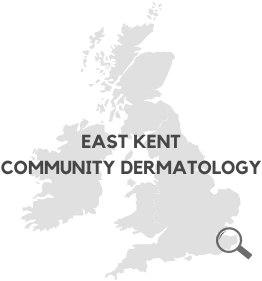We use cookies to help provide you with the best possible online experience.
By using this site, you agree that we may store and access cookies on your device. Cookie policy.
Cookie settings.
Functional Cookies
Functional Cookies are enabled by default at all times so that we can save your preferences for cookie settings and ensure site works and delivers best experience.
3rd Party Cookies
This website uses Google Analytics to collect anonymous information such as the number of visitors to the site, and the most popular pages.
Keeping this cookie enabled helps us to improve our website.
Cryotherapy
Why has cryotherapy been advised?
The majority of warts resolve without treatment. In some cases, they persist and can be symptomatic; they should then be treated with over-the-counter products for at least 6 months. If they do not resolve after this, cryotherapy is then considered.
What is Cryotherapy treatment?
Cryotherapy is a treatment which uses low temperature to remove/treat skin lesions. Liquid nitrogen has been used today to perform this.
What will my treatment involve?
Many warts will resolve after a single treatment, but if they do not further treatment may be required. If the lesion has not resolved at 2 weeks a further appointment should be arranged 4 weeks after the initial treatment. Subsequent treatments should be at 4 weekly intervals and continued for a maximum of 5 sessions. Very occasionally a dermatology specialist may suggest continuing beyond 5 sessions.
How should I look after the area after treatment?
Immediately following treatment apart from slight discomfort there will be little to see. Gradually over the next few days you may develop swelling and redness and blistering. Following this the healing stage occurs which is usually pain free.
What should I do if I develop a blister?
Blisters tend to settle after a few days and a scab forms. Some people blister more easily than others and the development of a blister doesn’t necessarily mean the skin has been frozen too much. Occasionally blisters can become filled with blood, this is harmless and should only be punctured if painful and very uncomfortable – you should seek the advice of your GP or the dermatology clinic on the number below if you are concerned about this.
Can the area become infected?
Wound infection is RARE however it might occur despite all our preventable measures. It is more likely in those who are diabetic, smokers, on steroids or people with poor health. Infected wounds tend to be weepy, swollen, hot, increasingly painful and with spreading redness. If you are concerned your wound is infected review this with your GP or attend the Urgent Treatment Centre at Estuary View.
Will I have a scar?
Scars are possible especially if a deep freeze has been necessary such as when treating a basal cell carcinoma. Scars slowly fade over 2 years but as with other scars it might always have a slightly different appearance to the surrounding skin. If you find your scar uncomfortable gently massaging Vaseline into the scar can help.
Will the skin around it change?
The surrounding skin may lighten or darken in colour especially in patients with darker skin. This usually improves with time but may be permanent.
What if the lesion hasn’t gone?
Allow at least two weeks for the treatment to fully work. If dermatology follow up is arranged please review this at the next planned appointment. If no follow has been arranged and you are concerned that the treatment has been unsuccessful, please call 01227 284314 to request Dermatology review. This should be arranged at least 4 weeks after the last cryotherapy session.

